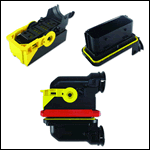Materials Ensure Connector Reliability in Harsh Environments
Connectors in the oil and gas industry must withstand high pressure, high temperature, and corrosive environments subject to heavy vibration and occasional shock loading. Materials are the key to ensure connector reliability in harsh environments.
The oil and gas industry demands high reliability in drilling and completion equipment, including electrical connectors used downhole. Connectors must withstand high pressure, high temperature, and corrosive environments subject to heavy vibration and occasional shock loading. Only resilient, conductive, corrosion-resistant connector materials with high-temperature resistance will provide that reliability.
The function of a connector is simple – to pass current or signal reliably from one component to another, whether the environment is benign or harsh. Circumstances do not get much harsher than the high-pressure, high-temperature environments experienced downhole in oil and gas drilling operations, where connectors must routinely function at +175°C to +225°C, with 250°C on the horizon. They may also experience pressure greater than 20,000psi.
In instrument housings thousands of feet underground or below the seabed, faulty connectors are not easy to reach or replace. To do so requires bringing the complete tool out of the well, which takes significant time and could easily cost tens of thousands of dollars an hour. When the cost of failure is several dollars per second, failure is not an option.
Many articles over the years have detailed the importance of contacts. To keep the resistance of the contact interface low and stable, the contact must provide adequate force between the two halves of the interface. (The minimum required force depends on what coatings are placed on the contact surfaces.) In order to prevent failure, the connector must provide and maintain this contact force over the life of the connection.
Electrical conductivity is required in the contact to carry large amounts of current and minimize the increase in temperature due to resistive heating. Good thermal conductivity would help pull away any excess heat generated by the resistance, which would otherwise add to the thermal burden that the connector would have to bear based on the environment.
Another important material property is resilience, which is the ratio of strength to stiffness. Materials with high resilience can withstand large strains and deflections without permanently deforming or losing contact force. The modulus of resilience is half the yield strength multiplied by the resilience ratio, and provides a measure of how much energy a component can absorb before permanent deformation occurs. It is similar to fracture toughness, which is a measure of how much energy a component can absorb before fracture. However, a part may be deformed to the point of unusability long before it fractures. Therefore, a high modulus of resilience allows the component to withstand the frequent shock and impact loads of downhole drilling operations.
Since components in the drill string are continuously turning, the stress state throughout will pass through a complete stress reversal each revolution. This cyclical loading promotes fatigue failures, as minute imperfections can morph into cracks that expand slightly each cycle, eventually leading to sudden, catastrophic failure. It is crucial to use materials that can withstand the required number of cycles at the given stress level, as determined by fatigue strength of the material.
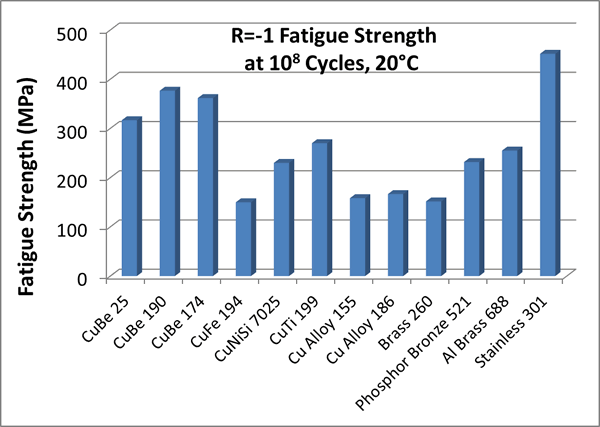
In general, as temperature increases, strength (yield, tensile, and fatigue) decreases. If the strength should happen to drop below the stress level experienced in the part, the parts can permanently deform, even if the given stress poses absolutely no problem at room temperature.
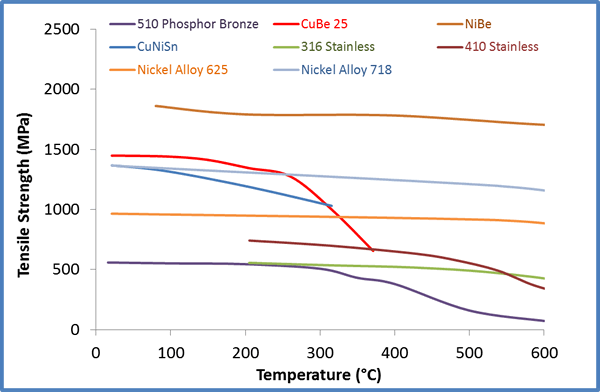
Furthermore, parts subjected to elevated temperatures will tend to experience stress relaxation. Elastic strain will slowly convert to plastic strain over time, which equates to delayed permanent set. Furthermore, as the total stress level falls due to relaxation, so does the contact force. This can result in intermittent signals and even open circuit conditions at the contact interface.
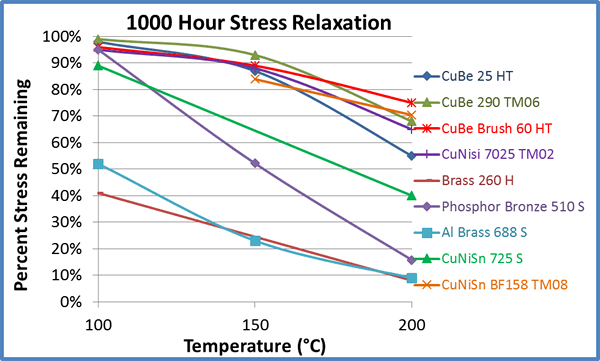
Corrosion resistance is less of a concern for connectors, as they are usually located inside sealed compartments free from corrosive hydrogen sulfide gas or chloride salts, and away from erosive drilling fluids. However, should a seal go bad, it is a race against time to get the tool out of the hole before the electronics are permanently damaged. Corrosion resistance in the material helps to prolong the window of opportunity. Furthermore, since corrosion accelerates fatigue, corrosion resistance helps to prolong the life of the component.
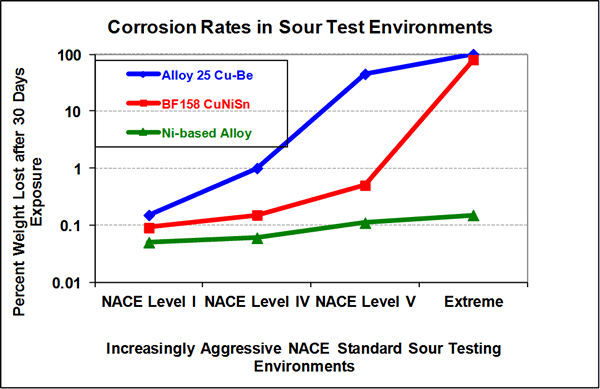
No material has an ideal combination of all the characteristics mentioned above. There will always be trade-offs among competing requirements. High-strength materials typically have lower conductivity, while more conductive materials usually have less strength. Stronger, tougher materials are more difficult to machine. Stronger materials may show more of a decrease in properties at elevated temperature, but improved stress relaxation resistance will offset some of this risk.
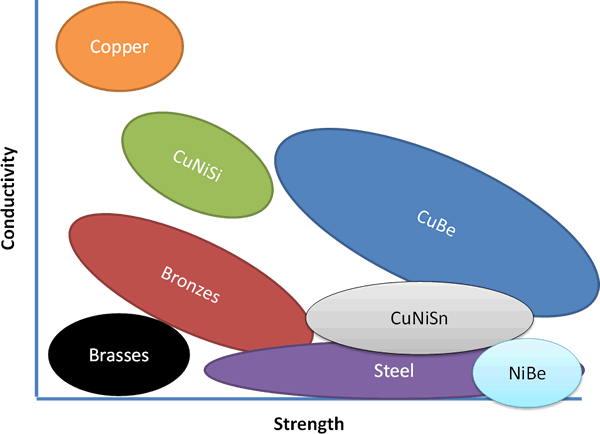
The downhole environment can be exceptionally demanding on materials – heat, corrosive substances, high cyclical loading, and frequent shock and impact loads. There is also a need to pack the instrument housing with sensitive electronics for logging and measuring, leaving less space available for connectors. This oppressive environment puts a heavy burden on the electronics as well as the connectors that keep the systems working.
Important Definitions:
Yield strength: The maximum stress a part can withstand without permanently deforming
Tensile strength: The maximum stress a part can withstand prior to fracture
Elastic modulus: The slope of the proportional section of a material’s stress strain curve, which provides a measure of the stiffness (spring rate) of a material
Fatigue strength (at N number of cycles): The maximum stress level at which a component loaded in a cyclical manner can be expected to survive N number of cycles
Resilience: The ratio of yield strength to elastic modulus, or the amount of strain and deformation a part can absorb and still return to its original shape when the load is removed
Modulus of resilience: The square of the yield strength divided by twice the elastic modulus – an approximation of the amount of energy a part can absorb before permanent deformation occurs
Impact strength: The amount of energy it requires to completely fracture a material
Fracture toughness: The amount of energy it takes to get an existing crack to propagate through the material
Author Michael Gedeon is engineering manager at Materion Performance Alloys.


